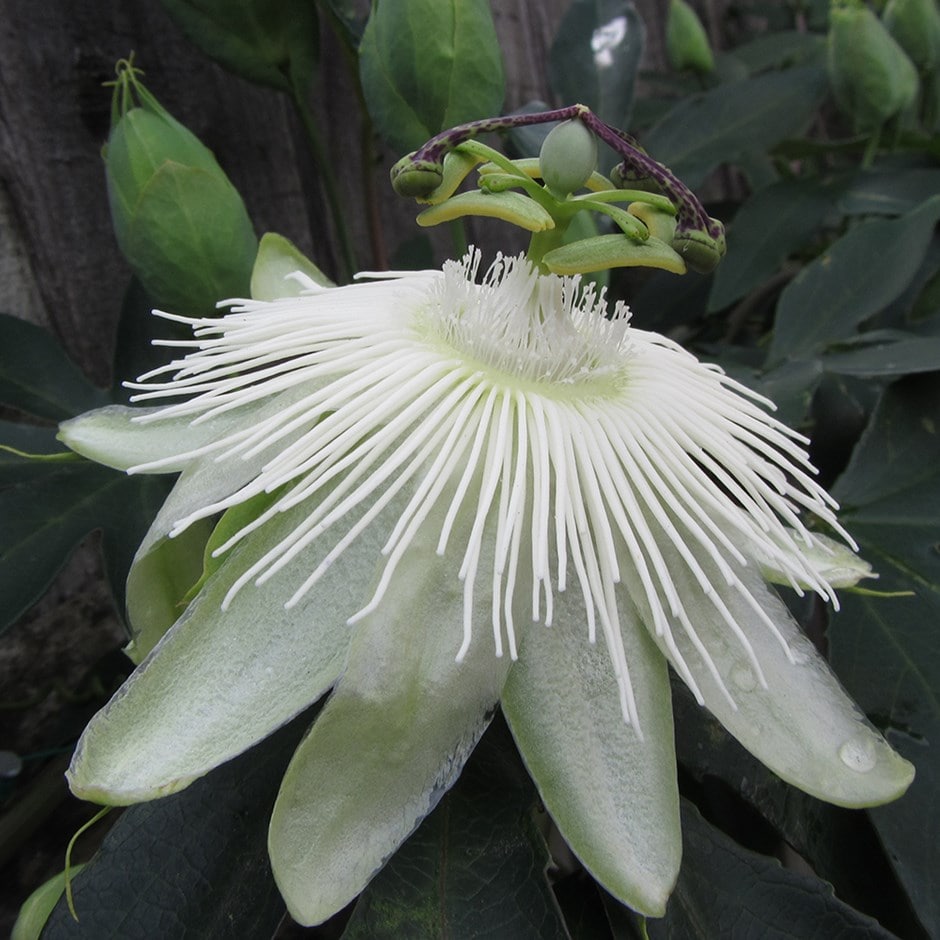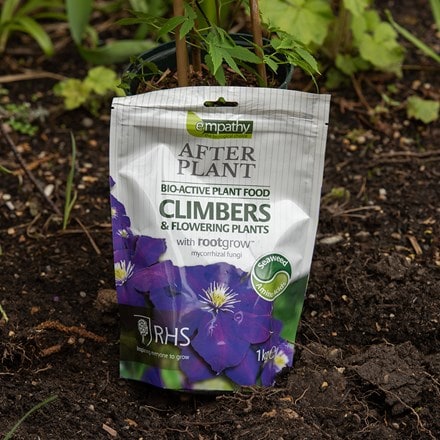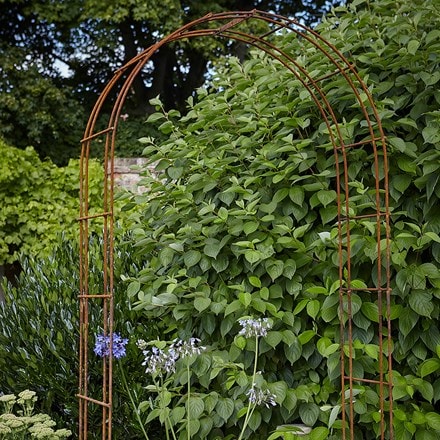Passiflora 'Snow Queen'
passion flower
- 3 litre pot | 60cm cane
- £32.99
- In stock (shipped within 2-3 working days)
Delivery options
- Standard £5.99
- Position: full sun
- Soil: moderately fertile, moist but well-drained soil
- Rate of growth: fast
- Flowering period: July to September
- Hardiness: frost hardy (needs winter protection in cold areas)
The pure white flowers of Passiflora 'Snow Queen' are larger than average, and each one tends to remain open for several days.
An elegant and dramatic cultivar, it is also said to be one of the hardiest. This passion flower will flourish when planted against a warm sunny wall, but it can also be trained through an obelisk or arch - and even potted up for the terrace or conservatory.
An elegant and dramatic cultivar, it is also said to be one of the hardiest. This passion flower will flourish when planted against a warm sunny wall, but it can also be trained through an obelisk or arch - and even potted up for the terrace or conservatory.
Passionflowers thrive in moist, well-drained soil enriched with plenty of well-rotted manure or garden compost before planting. Choose a sunny, sheltered spot protected from cold winds or pot up in a greenhouse or conservatory for earlier growth and better fruit ripening.
Provide sturdy support, such as trellis or horizontal wires, for the twining stems to climb. Water freely during the growing season and reduce slightly in winter. For container growing, use large pots to account for rapid root growth, and ensure plants are moved to a frost-free location in winter.
Feed regularly throughout the growing season and mulch in autumn with well-rotted manure or compost. In late autumn, cut back the top growth to around 10cm (4in) and apply light winter protection, such as a thick mulch around the base (avoiding the main stem) and wrapping the plant with a double layer of horticultural fleece if heavy frost is forecast.
Passionflowers may die back in winter but will re-emerge in late spring in milder regions of the UK. Prune in spring to remove dead or overcrowded stems, and once established, trim flowered shoots after blooming to encourage strong growth.
Provide sturdy support, such as trellis or horizontal wires, for the twining stems to climb. Water freely during the growing season and reduce slightly in winter. For container growing, use large pots to account for rapid root growth, and ensure plants are moved to a frost-free location in winter.
Feed regularly throughout the growing season and mulch in autumn with well-rotted manure or compost. In late autumn, cut back the top growth to around 10cm (4in) and apply light winter protection, such as a thick mulch around the base (avoiding the main stem) and wrapping the plant with a double layer of horticultural fleece if heavy frost is forecast.
Passionflowers may die back in winter but will re-emerge in late spring in milder regions of the UK. Prune in spring to remove dead or overcrowded stems, and once established, trim flowered shoots after blooming to encourage strong growth.
To avoid dry conditions, and to ensure good soil contact around the rootball, we advise planting climbers at least 30cm (12in), and preferably 45-60cm (18-24in) away from the base of a wall or fence. An even larger distance should be maintained when planting climbers beside an existing tree or shrub.
- Humans/Pets: Fruit are ornamental - not to be eaten
Goes well with
Empathy RHS after plant climbers & flowering plant food with rootgrow
1kg
£7.99
In stock (shipped within 2-3 working days)
Rustique garden arch - rust
W120cm × D40cm × H230cm
£149.99
In stock (shipped within 2-3 working days)
Gothic clematis garden arch - black
W142cm × D53cm × H224cm
£389.99
In stock (shipped within 2-3 working days)




